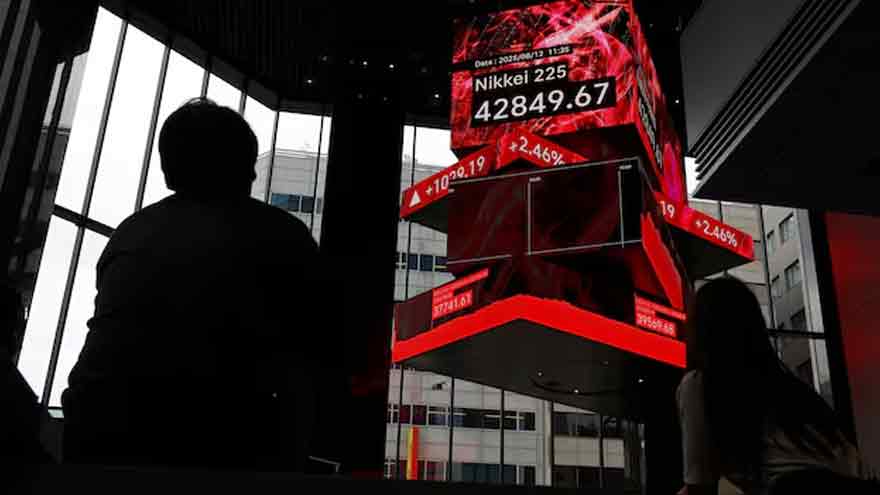SYDNEY (Reuters) – Share markets edged higher in Asia on Monday ahead of what is likely to be an eventful week for U.S. interest rate policy, while oil prices slipped as risks to Russian supplies seemed to fade a little.
A general risk-on mood saw indices in Japan and Taiwan make record peaks, while Chinese blue chips reached their highest in 10 months.
U.S. President Donald Trump now seemed more aligned with Moscow on seeking a peace deal with Ukraine instead of a ceasefire first, after meeting Russian President Vladimir Putin in Alaska on Friday.
Trump will meet Ukrainian President Volodymyr Zelenskiy and European leaders later on Monday to discuss the next steps, though actual proposals are vague as yet.
The major economic event of the week will be the Kansas City Federal Reserve’s August 21-23 Jackson Hole symposium, where Chair Jerome Powell is due to speak on the economic outlook and the central bank’s policy framework.
“Chair Powell will likely signal that risks to the employment and inflation mandates are coming into balance, setting up the Fed to resume returning policy rate to neutral,” said Andrew Hollenhorst, chief economist at Citi Research.
“But Powell will stop short of explicitly signalling a September rate cut, awaiting the August jobs and inflation reports,” he added. “This would be fairly neutral for markets already fully pricing a September cut.”
Markets imply around an 85% chance of a quarter-point rate cut at the Fed’s meeting on September 17, and are priced for a further easing by December.
The prospect of lower borrowing costs globally has underpinned stock markets and Japan’s Nikkei (.N225) firmed 0.9% to a fresh record high.
MSCI’s broadest index of Asia-Pacific shares outside Japan (.MIAPJ0000PUS) was a fraction lower, having hit a four-year top last week. Chinese blue chips (.CSI300) added 1.0%, bringing gains so far this quarter to almost 8%.
EUROSTOXX 50 futures and FTSE futures rose 0.2%, while DAX futures firmed 0.1%.
SOLID EARNINGS
S&P 500 futures nudged up 0.2%, while Nasdaq futures added 0.3% with both near all-time highs.
Valuations have been underpinned by a solid earnings season as S&P 500 EPS grew 11% on the year and 58% of companies raised their full-year guidance.
“Earnings results have continued to be exceptional for the mega-cap tech companies,” noted analysts at Goldman Sachs. “While Nvidia has yet to report, the Magnificent 7 apparently grew EPS by 26% year/year in 2Q, a 12% beat relative to consensus expectation coming into earnings season.”
This week’s results will provide some colour on the health of consumer spending with Home Depot, Target, Lowe’s and Walmart all reporting.
In bond markets, the chance of Fed easing is keeping down short-term Treasury yields while the longer end is pressured by the risk of stagflation and giant budget deficits, leading to the steepest yield curve since 2021.
European bonds also have been pressured by the prospect of increased borrowing to fund defence spending, pushing German long-term yields to 14-year highs.
Wagers on more Fed easing have weighed on the dollar, which dropped 0.4% against a basket of currencies last week to last stand at 97.851 .
The dollar was a fraction firmer on the yen at 147.46 , while the euro held at $1.1701 after adding 0.5% last week.
The dollar has fared better against its New Zealand counterpart as the country’s central bank is widely expected to cut rates to 3.0% on Wednesday.
In commodity markets, gold was stuck at $3,343 an ounce after losing 1.9% last week.
Oil prices struggled as Trump backed away from threats to place more restrictions on Russian oil exports.
Brent dropped 0.2% to $65.74 a barrel, while U.S. crude eased 0.1% to $62.76 per barrel.
Related Topics
